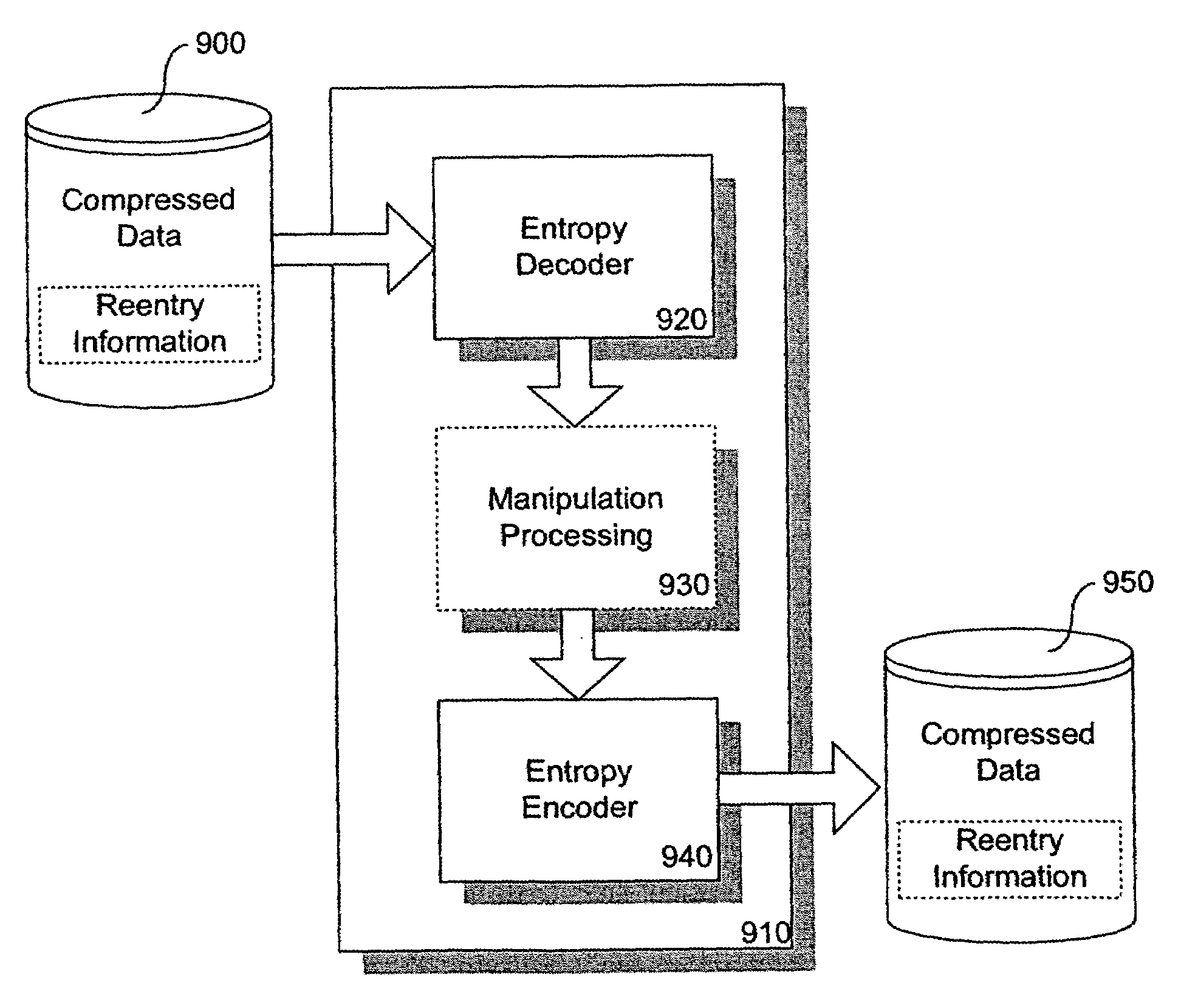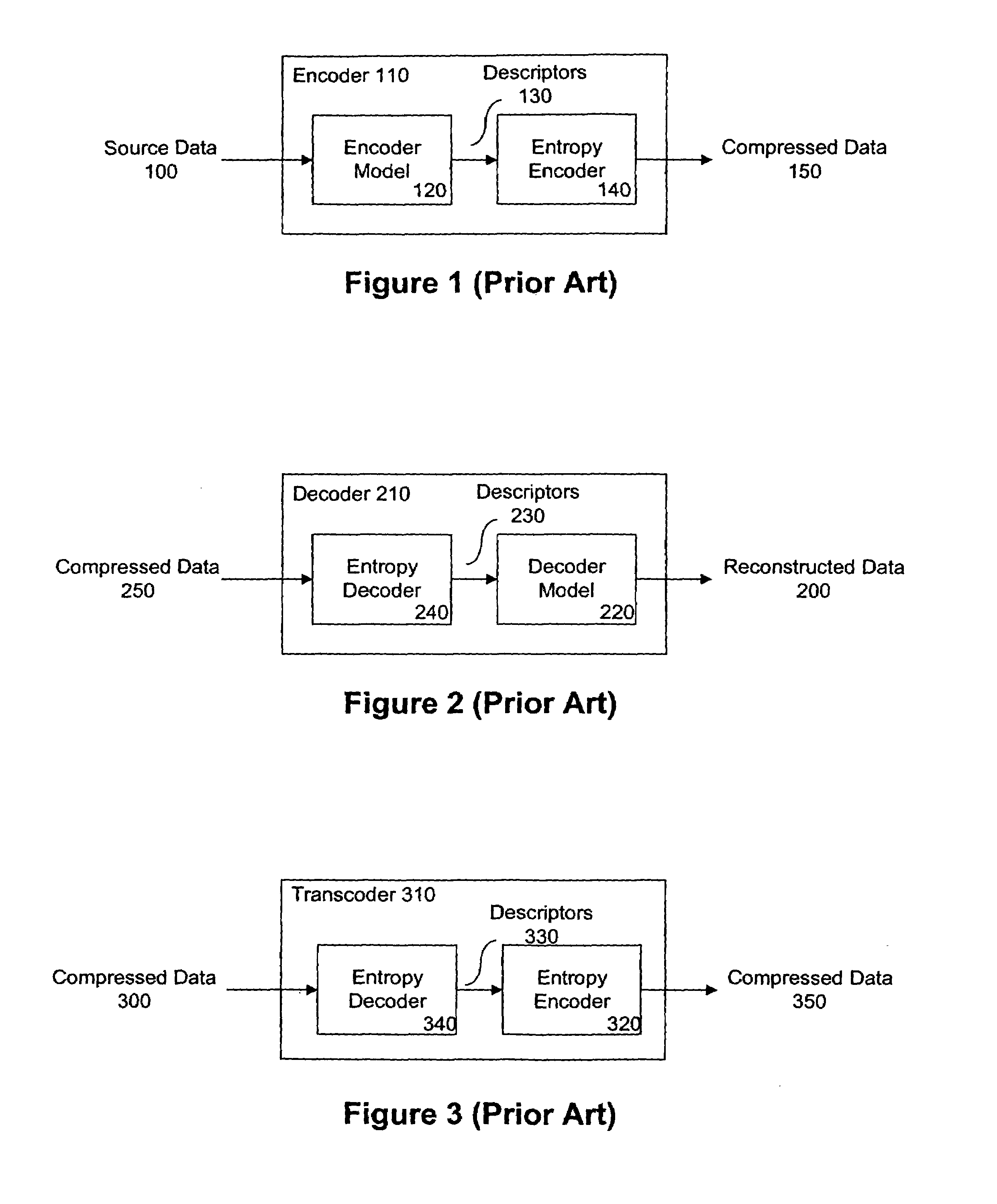Reentry into compressed data
a technology of compressed data and information, applied in the field of reentry information into compressed data stream, can solve the problems of inability to reenter the compressed data stream within a line, transmission errors detected, unaffordable large-scale digital color printing, etc., and achieve the effect of minimizing storage requirements and efficient manipulation of compressed data
- Summary
- Abstract
- Description
- Claims
- Application Information
AI Technical Summary
Benefits of technology
Problems solved by technology
Method used
Image
Examples
Embodiment Construction
[0064]Apparatus and methods are described for entering compressed data streams at selected reentry points thereby allowing efficient manipulation of the compressed data and minimizing storage requirements. Because of the absolute torrent of data that requires processing in a very short computational window, efficient manipulation of compressed images, such as rotation, is important in the context of large-scale digital color printing, for example.
[0065]In brief, according to one embodiment of the present invention a two stage process may be employed in processing a compressed data stream. Rather than simply sequentially processing a compressed data stream according to the order in which it appears, a two stage technique is employed which allows portions of the reconstructed data to be extracted from different parts of the compressed data stream. During a reentry information generation stage, a scan is made through the compressed data stream to identify locations in the compressed da...
PUM
 Login to View More
Login to View More Abstract
Description
Claims
Application Information
 Login to View More
Login to View More - R&D
- Intellectual Property
- Life Sciences
- Materials
- Tech Scout
- Unparalleled Data Quality
- Higher Quality Content
- 60% Fewer Hallucinations
Browse by: Latest US Patents, China's latest patents, Technical Efficacy Thesaurus, Application Domain, Technology Topic, Popular Technical Reports.
© 2025 PatSnap. All rights reserved.Legal|Privacy policy|Modern Slavery Act Transparency Statement|Sitemap|About US| Contact US: help@patsnap.com



